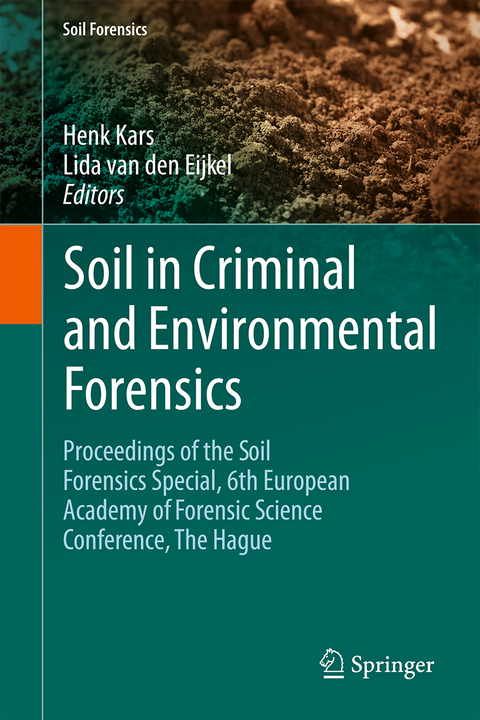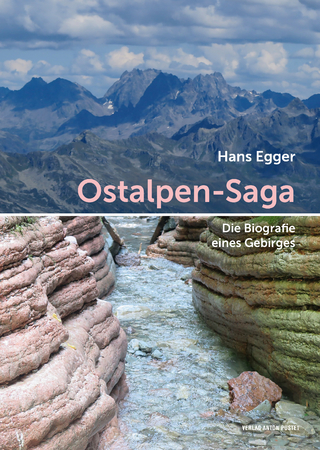
Soil in Criminal and Environmental Forensics
Springer International Publishing (Verlag)
978-3-319-33113-3 (ISBN)
Professor Henk Kars has a background in mineralogy, petrology and geochemistry. After having finished his PhD Early-Medieval Dorestad, an Archaeo-Petrological Study, he performed between 1984-1994, in close cooperation with specialists in different areas of science, a variety of archeometric studies in the fields of provenancing (stone, ceramics), ancient technology (iron production), dating (geomagnetism, 14C, dendrochronology) and (geochemical) prospection, which has resulted in a high number of papers in international, often peer-reviewed, journals. Since 1995 the research subjects changed from main stream science in archaeology to the in situ preservation of archaeological heritage. This is demonstrated by the participation and coordination of EC-projects that studied the in situ deterioration of the metal artifact, bone and wood. Today he is an internationally acknowledged expert with regard to the preservation of archeological remains in situ. In addition to this he has been member of the management team of the Dutch National Service for Archaeological Heritage (ROB) for more than five years. His career at Vrije Universiteit Amsterdam (VU) started in 1994 where he was appointed, on a part time basis, to the first chair of Archaeometry in the Netherlands. In 1997 he became director of the post-academic course "Management van Archeologische Projecten" (projectmanagement for archaeologists), which is performed within a partnership of both universities of Amsterdam and ROB. Since 2002 he has been a fulltime professor Geo- en Bioarchaeology at the VU and director of the newly established Institute for Geo- and Bioarchaeology. Lida van den Eijkel (MSc) studied Environmental Sciences at Wageningen University, a comprehensive education in both the biotic and the abiotic environment. She specialized in soil and water pollution, with strong emphasis on microbiology and physical chemistry. Part of her education was a 6 month stay in Siberia to study the hydrobiology and pollution of Lake Baikal (at the University of Irkutsk and Limnological Instiute of the Academy of Sciences).After graduating she worked for consultancies on projects of soil remediation (especially cases of metal pollution), for a company that developed (superconducting) magnetic systems as a clean-up technology for waste water and soil, and for the (now) Ministry of Infrastructure and the Environment (Rijkswaterstaat) on the pollution of flood plains.She moved to the Netherlands Forensic Institute more than 25 years ago to work with the new to be established department of Environmental Forensics, in the beginning doing pioneering organizational work as well as forensic case-work with regards to the enforcement of environmental laws in The Netherlands. Later she extended the case-work to criminal law enforcement, examining especially soil and water contact traces.In recent years she concentrated on environmental forensics again. Fields of special interest and work are the use of data collections of soil characteristics, the application of (recycled) materials as fertilizers, care duty for soil and GIS. An emerging field of work is the water and soil pollution due to organized serious crime, such as the delibarate dumping in the environment of waste resulting from the production of illicit drugs.
Preface.- SECTION I: Criminal soil forensics.- Soil traces: forensic examinations and legal context.- Chapter 1: Forensic palynology: Checking value of pollen analysis as a tool to identify crime scene in semiarid environments.- Chapter 2: Forensic Palynology: How pollen in dry grass can link to a crime scene.- Chapter 3: Geological analysis of soil and anthropogenic material. Three case studies.- Chapter 4: Forensic Soil Analysis: case study of looting at a Roman-Visigothic burial vault.- Chapter 5: Soil comparisons using small soil traces, a case report.- Chapter 6: Forensic comparison of soil samples.- Chapter 7: Reinstating soil examination as a trace evidence sub-discipline.- Chapter 8: Methodology of Forensic Soil Examination in Russia and a View on the World Standardization Process.- SECTION II: Environmental soil forensics.- Forensic tools for spatial and chemical analysis.- Chapter 9: Geographical Information Systems - a working example in the Brazilian Federal Police for fighting environmental crime.- Chapter 10: Forensic characterization of gasoline releases impacting the environment.- Chapter 11: A general overview of pesticides in soil: Requirement of sensitive and current residue analysis methods.- SECTION III: Searches and burial sites.- A. Searches: co-operation, strategies and techniques.- Chapter 12: A study of pH as an influencing factor in the survival of human remains at sites investigated by the Independent Commission for the Location of Victims Remains.- Chapter 13: Interdisciplinary approaches to the search and location of buried bodies: a United Kingdom context.- Chapter 14: Forensic Geophysics: How the GPR technique can help with forensic investigations.- Chapter 15: Filter paper adsorption and ninhydrin reagent as presumptive test for gravesoil.- B. Decomposition and degradation processes.- Chapter 16: Changes in soil microbial activity following cadaver decomposition during spring and summer months in southern Ontario.- Chapter 17:Soil fauna and their effects on decomposition within coniferous and deciduous tree soil samples.- Chapter 18: Analysis of decomposition fluid collected from carcasses decomposing in the presence and absence of insects.- Chapter 19: Forensic analysis of volatile compounds from decomposed remains in a soil environment.- Chapter 20: GC×GC-TOFMS, the Swiss knife for VOC mixtures analysis in soil forensic investigations.- Chapter 21: An investigation of the degradation of polymeric grave goods in soil environments.
| Erscheinungsdatum | 12.09.2016 |
|---|---|
| Reihe/Serie | Soil Forensics |
| Zusatzinfo | IX, 346 p. 121 illus., 63 illus. in color. |
| Verlagsort | Cham |
| Sprache | englisch |
| Maße | 155 x 235 mm |
| Themenwelt | Medizin / Pharmazie ► Medizinische Fachgebiete |
| Naturwissenschaften ► Geowissenschaften ► Geologie | |
| Recht / Steuern ► Strafrecht ► Kriminologie | |
| Weitere Fachgebiete ► Land- / Forstwirtschaft / Fischerei | |
| Schlagworte | Biomedical and Life Sciences • carcasses • Criminology • Criminology & Criminal Justice • Criminology & Criminal Justice • Decomposition • Environmental Forensics • forensice palynology • forensic geophysics • Forensic Science • Geology • Human remains • Soil Analysis • soil fauna • Soil Science & Conservation • Soil Science & Conservation |
| ISBN-10 | 3-319-33113-2 / 3319331132 |
| ISBN-13 | 978-3-319-33113-3 / 9783319331133 |
| Zustand | Neuware |
| Haben Sie eine Frage zum Produkt? |
aus dem Bereich


